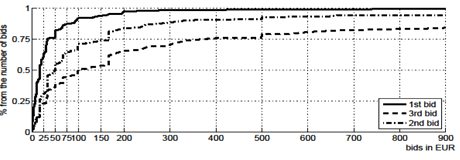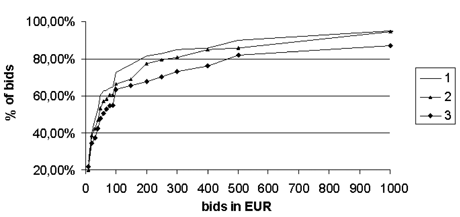by Marek Kumpošt and Vashek Matyáš
As a part of our research on privacy protection and identity management, we conducted two experiments to find out how people value their private information. Privacy and control of private information sharing/flow is becoming a crucial part of everyday “online” life. But still, people seem to be prepared to disclose private data for a very modest reward – loyalty cards, for example, allow profiling of customer behaviour and use of this information (to create, e.g., personalized advertisements. Search engines and social networks can track users’ browsing activities via embedded sharing buttons. This is a very common technique and even if we are not a member of a social network, there is a lot of evidence about our browsing history. This can also be used for providing customized content.
Privacy protection should be an important aspect of everyone’s real life, but what is the “real” value of private information? This question was our motivation for organizing two experiments. Both projects were undertaken within the Future of Identity in the Information Society (FIDIS) Network of Excellence activities. In both experiments, we used a cover story to hide the real purpose of a questionnaire. This approach enabled us to avoid the difficulties associated with obtaining realistic data when people are asked directly about the value of their private information. Details of the experimental design can be found in [1, 2].
In the first experiment [1], we questioned a sample of 1,200 people from five EU countries about taking a part in a (fictitious) study of mobile phone usage. Each participant could place a bid; a financial reward he/she wanted to receive from the study. The truth was, that we were interested in the monetary value people would attach to a month of location data (collected through their mobile phones every five minutes). The structure of all questionnaires can be found in [1]. We extracted valuations for different kinds of data usage: qualitative – academic or commercial purposes; and quantitative – one month and one year.
Figure 1 shows bid distributions of people who provided data for all three scenarios (1 – academic usage; 2 – commercial usage, one month; 3 – commercial usage, one year). The x-axis shows the value of bids in euros and the y-axis shows the fraction of bidders who entered bids of value lower or equal to a given amount. We standardized the data to account for the buying power in individual countries. The median of bids increased approximately twofold when the data were to be used for commercial purposes. The extension from one month to one year resulted in another twofold increase. This indicates that participants were more sensitive to the purpose of the data collection than the duration and quantity of data collected. The median bid for the first scenario (academic use of data) was €43. More detailed results can be found in [1].

Figure 1: Distribution of bids for all three study scenarios
Our second experiment [2] followed the same design but with the different private information being priced. The main goal of the study was to find out how people value information about their use of online communication tools such as email or instant messaging. The real purpose of the study was concealed by a cover story stating that it was to be a two-week sociological study about the use of online communication (using a special tool installed on a participant’s machine). Monitoring scenarios were: email traffic data (no message body); instant messaging traffic data; and all traffic data. Data would then be used for academic purposes – line 1; commercial purposes – line 2; or governmental purposes – line 3 in Figure 2.

Figure 2: Distribution of bids for all communication data all three study scenarios
Figure 2 shows the distribution of bids for all tracking data. Participants did not differentiate between the type (email versus all) of tracking data and the median monetary compensation for email traffic data was €30 (the same price for instant messaging). All tracking data are “more expensive”, the median being €50. More information and comprehensive analyses can be found in [2]. Interestingly, the participants (young generation) were less willing to share the same data for commercial purposes than for academic use and even less so for governmental efforts to improve terrorist activity tracking tools. This was shown by both declining number of participants willing to provide their data for such purposes, as well as by rising valuation of the data by those who would still be willing to participate.
Link: http://www.fidis.net
References:
[1] D. Cvrček, M. Kumpošt, V. Matyáš, G. Danezis, “A Study on The Value of Location Privacy”. In: Fifth ACM Workshop on Privacy in the Electronic Society. USA: ACM, 2006. pp. 109-118. ISBN 1-59593-556-8.
[2] V. Matyáš, M. Kumpošt, “Monetary valuation of people’s private information”. In: Privacy and Usability Methods Pow-wow (PUMP) 2010; 2010. 7 pp. 2010, University of Abertay Dundee.
Please contact:
Vashek Matyáš
Masaryk University, Brno – CRCIM, Czech Republic
Tel: +420 549 49 5165
E-mail:










